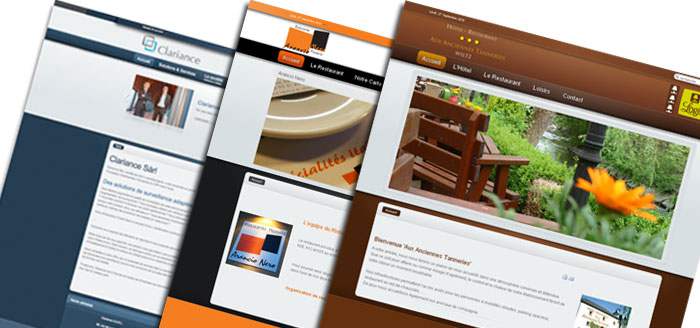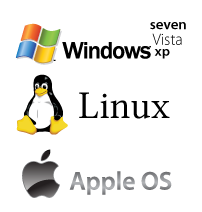When Palm first unveiled webOS in 2009, the new platform was supposed to be the next mobile messiah.
With its sexy user interface, a developer-friendly backend and a host of new features like multitasking and contact Synergy, everyone was certain webOS would be the platform to rejuvenate the once-prominent PDA pioneer company.
Of course, webOS has shaped up to be less of a Jesus than an L. Ron Hubbard, as the platform’s following never rose above cult status.
As of November 2010, Palm’s market share of U.S. mobile platforms weighed in at a paltry 3.9 percent, according to a comScore report. Sales of the Palm Pre — the flagship device on which webOS was first shipped — were lackluster, with numbers never breaking the 1 million mark in the first three months of the phone’s release. Weigh that against the iPhone 3GS, which launched two weeks after the Pre. One million of Apple’s handsets were sold in the first three days after release.
Palm loyalists are praying for a comeback, and may see it at the upcoming invite-only event at Hewlett-Packard’s San Francisco offices Feb. 9.
“The hope is that HP/Palm will be releasing some new smartphone handsets as well as tablets,” says developer Justin Niessner in an interview with Wired.com. “If they fail to deliver, I know quite a few people — including myself — that will be switching to a different mobile OS.”
So what happened? Why did webOS seem so promising and then fall flat on its face?
The Good
The mobile landscape hasn’t always looked so grim for Palm’s platform.
“WebOS introduced a sound development metaphor which had the potential to attract developers,” IDC software analyst Al Hilwa told Wired.com in an interview. “It has a smooth and fluid interface, with good bones like multitasking and a wealth of features, making it a fairly easy platform to develop for.”
Apps for the webOS platform are written primarily in JavaScript and HTML, programming languages used by developers to code for the web. So if you’re already a web developer — and after the early days of the dot-com boom who isn’t? — developing apps for webOS is relatively easy.
“Lots of people who wouldn’t have otherwise created apps flocked to to webOS,” developer Roy Sutton, who runs app development tutorial site webos101.com, told Wired.com in an interview. “They could come in and port over a portion of an existing web app to webOS in a matter of hours.”
Alternatively, developing for Apple’s mobile operating system requires learning its tool chain. That means learning Cocoa Touch, Apple’s proprietary API for building iOS apps.
Another big draw for the developer crowd: “developer mode.” After entering the Konami code while on the Pre’s main idle launch screen, the phone becomes startlingly easy to hack. 
“Users can install anything from patches that change core functionality of webOS,” says developer Justin Niessner, “to replacement kernels that enable a user to overclock their WebOS device.”
Additionally, you can access and load “Homebrew” apps, or those still in beta from other developers, onto the Pre. While the Homebrew repertoire consists of a paltry 500+ beta apps, it’s the kind of access that appeals to the hacker sensibility.
Palm Pre users didn’t have to deal with some of the setbacks that Android OS enthusiasts ran into with platform expansion across multiple hardware manufacturers. With Google’s push to update the OS an average of twice yearly since debut, version fragmentation issues have plagued both developers and consumers.
The Bad
Indeed, Palm had attracted lots of positive attention from the tech press at large after the Consumer Electronics Show announcement. While many doted over the sleek look of the new hardware, others (like Wired.com) wagered that webOS would be Palm’s “secret sauce,” the kicker that would set the Pre apart from other 2009 smartphone debuts.
‘It took us six months to see a product. In Silicon Valley time, that’s an eternity.’
But with every advantage webOS had in the veritable mobile platform buffet available to consumers, there were just as many setbacks (if not quite a few more).
“The platform had such tremendous hype and momentum after it was announced at CES 2009,” says Sutton. “But it took us six months to see a product. In Silicon Valley time, that’s an eternity.” The Pre was all but considered vaporware by the time its June 6 launch date came around, only to have its thunder immediately stolen by the iPhone 3GS, which launched shortly thereafter to much consumer ado.
As for the phone itself, some found the Pre’s design lacking. “Palm definitely could have done themselves a favor by releasing some hardware with more modern design cues,” Niessner says. “The screen was smaller than other comparable smart phones on the market. And the slide-out QWERTY keyboard was also very difficult to use.”
Even if you loved the design of the hardware, “The life cycle of the Pre and even the Pre Plus [eventual successor to the Pre] was short,” says developer Peter Ma. ” It couldn’t catch up with the number of iPhones and Android devices coming out after it.”
HTC’s Nexus One, for instance, has a 1-GHz Snapdragon processor (compared to the Pre’s 500 MHz), 512 MB of RAM (to the Pre’s 256 MB) and a 5-megapixel camera (to the Pre’s 3 megapixels) — it’s close to twice the phone that the Pre is. “While the perceived speed of the Palm Pre was acceptable,” Niessner says, “the numbers certainly didn’t do the hardware any favors.”
Authors:


















